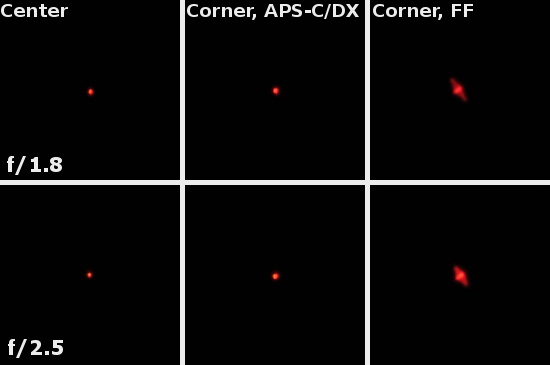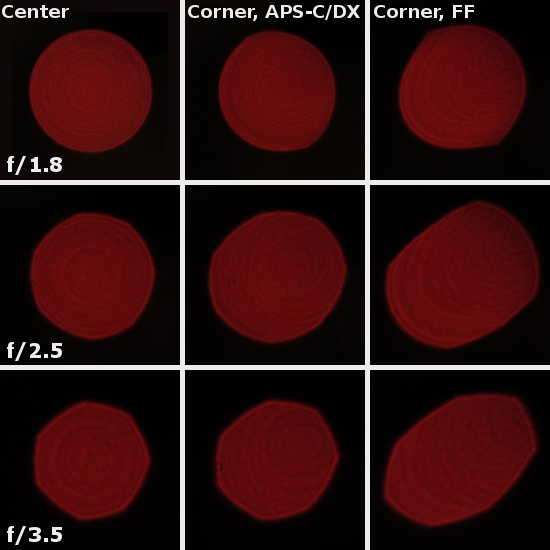Nikon Nikkor AF-S 20 mm f/1.8G ED
7. Coma, astigmatism and bokeh

The tested lens doesn’t have any problems with the astigmatism correction for a change. An average difference between horizontal and vertical MTF50 function values amounted to just 3.2% and we consider it low.
Please Support UsIf you enjoy our reviews and articles, and you want us to continue our work please, support our website by donating through PayPal. The funds are going to be used for paying our editorial team, renting servers, and equipping our testing studio; only that way we will be able to continue providing you interesting content for free. |
- - - - - - - - - - - - - - - - - - - - - - - - - - - - - - - - - - - - - - - - - - - - - - - -
It would be also difficult to carp about defocused images seriously. The light circles do have the onion rings structure but that effect is not especially pronounced and you can’t see any distinct local extremes or rims. You also should remember that, with such parameters, you won’t have a lot of opportunities to admire vast blurred areas in your photos.







